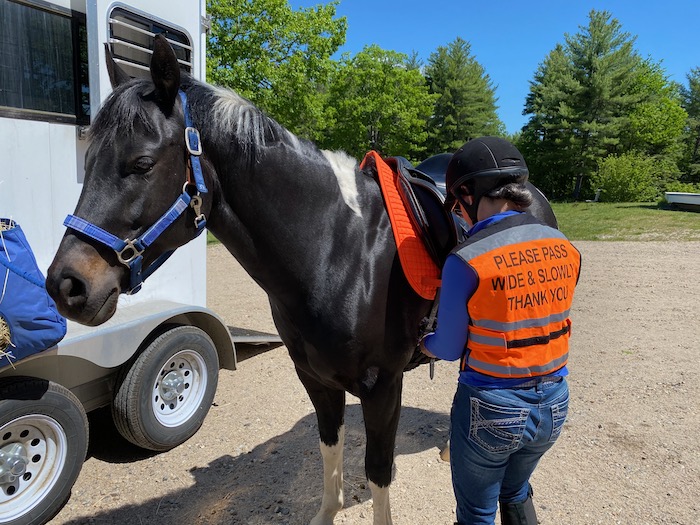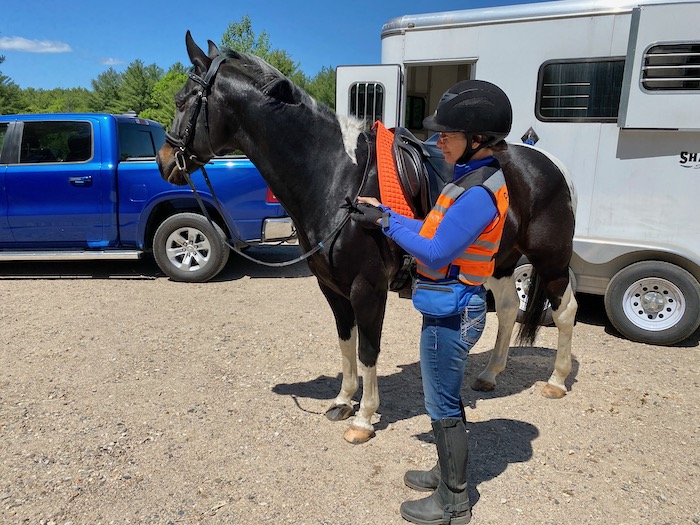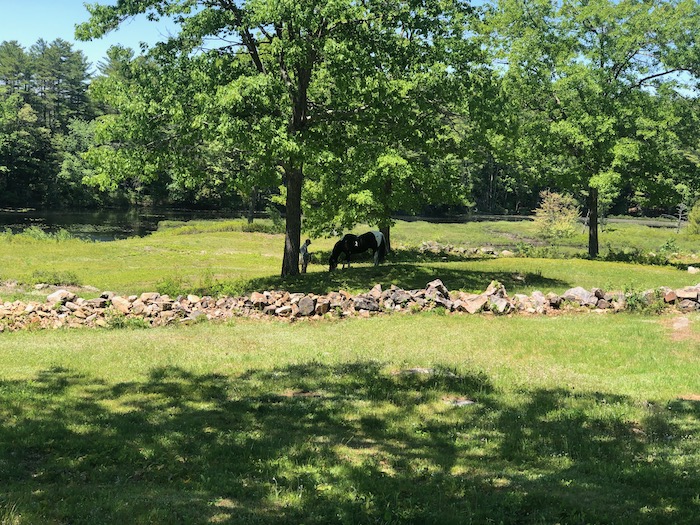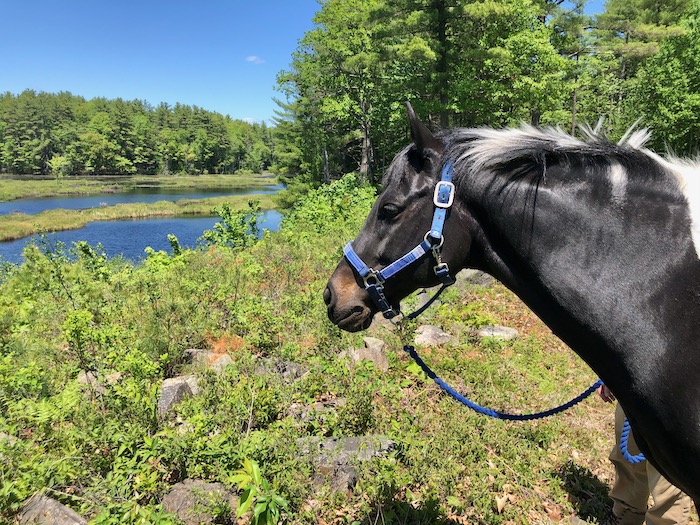Do you recognize your horse’s happy face? A horse’s expression can be hard to read. We humans are clued into smiles. That’s why we like dolphins so much – even though they’re not actually grinning. It’s why it’s common to think that birds don’t have emotions – because their beaks don’t change shape. (That’s why the animators of the movie Chicken Run gave the chickens mouths with teeth! They said that they needed such incorrect anatomy to convey the characters’ emotions.) It’s why people often believe that their dogs are happy even when they’re in an aggressive stance – a threatening curled lip looks like a grin.
Our horses don’t smile. But their faces are expressive (if you know what to look for) and there are plenty of things other than upturned lips to clue you into how they’re feeling.
On Saturday I trailered Tonka to Turtle Hill (my house in southern Maine.) It’s a half-hour from his boarding barn. He’s been here enough to know that it’s where good things happen. At least, good things if you’re a horse like Tonka who likes to get out on his own.
The first few times at Turtle Hill, Tonka wasn’t scared but he was on alert. There was a tension in his body. On Saturday I didn’t see that at all. Look at this body language while tacking up. Even as I tighten the girth, his expression is relaxed. Soft eye. Wrinkle-free muzzle. Ears slightly swiveled to either side.

As I fuss with putting on my gloves he keeps all four hooves steady on the ground, but looks with interest towards the driveway.

This is an eager yet calm horse, happy to be out!
As we head out down the logging road, you can hear how steady his footfalls are. You can’t see his face, but look at his rump and tail. It swings side-to-side in a relaxed way.
Unfortunately, not much further on we stopped being so happy. A stiff wind at Turtle Hill had blown all of the biting bugs away and made me think that we could venture safely into the woods without our fly nets. Not so. The woods sheltered the mosquitos and we were soon covered. Tonka and I both became agitated so we headed back to Turtle Hill, where I put on his bug armor and set off again. This time we went into the woods behind my house. The trails there are not maintained, but Tonka let me know that he was more than willing to bushwhack to see what was up ahead. I’ve hiked here so knew what I was in for. I dropped the reins (held onto the camera) and ducked!
All together, we walked about 4 miles. Then there was grazing time.

Tonka wasn’t particularly hungry, so he opted to go down to the marsh, where there were interesting things to nibble and a beautiful view which Tonka seems to enjoy.

There it is again, that expression. It’s relaxed but still shows interest in the world around him. Tonka’s happy face.

Do you know your horse’s happy face? What brings it out in your horse?


Serene I think I can recognize. Eager versus alarmed I have a lot more difficulty with if the horse is stationary.
When alarmed a horse seems bigger. Eager has expressiveness without tight tension. Keep making your observations. You’ll recognize it!
My black & white spotted saddle horse has a happy face almost all the time. He also has a hopeful face meaning is it time to eat yet, and a bossy face when he is telling one of the mares to move away or go where he thinks she should go.
How nice to have a cheerful horse in your barn!